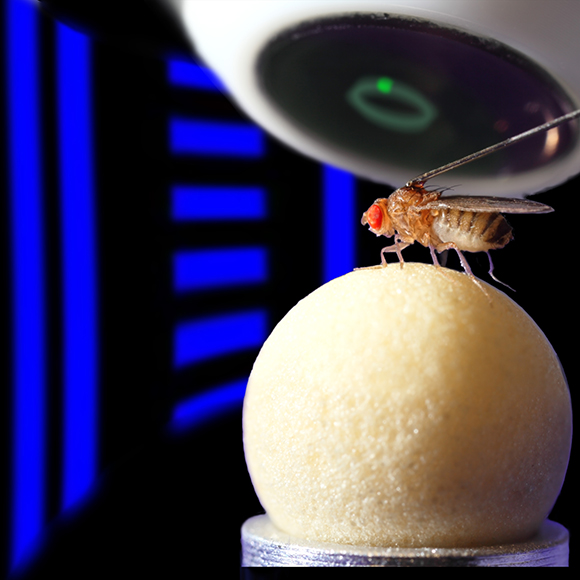
Hans-Lukas Teuber Lecture: Linking vision and action: the workings of a neural compass
Description
Decades of neurophysiological studies in mammals have uncovered intriguingly abstract neural representations in central brain regions that are thought to be involved in navigation. The complexity of the underlying circuits and their distance from the sensory and motor periphery has, however, made it difficult to obtain a mechanistic understanding of their function. I will discuss our efforts to understand how visual landmark and self-motion information is used to compute heading direction in an organism with a much smaller brain, Drosophila melanogaster. In a recent study, we used two-photon calcium imaging in head-fixed behaving flies to find compass-like attractor dynamics in the ellipsoid body—a substructure within the central complex. The central complex is a higher order brain region known to be conserved across insects and crustaceans. We are now employing genetic tools, connectomics, modeling, optogenetics, calcium imaging, and whole-cell patch clamp electrophysiology to dissect the structure and function of the recurrent circuits in this brain region. In particular, we are exploring how visual inputs are processed to obtain the animal’s orientation relative to landmarks in its surroundings and how the fly’s turning movements update its heading representation. More broadly, we hope to exploit the fly’s powerful experimental toolkit to extract fundamental principles of adaptive sensorimotor integration.
Speaker Bio
Vivek studied to be an aerospace engineer at the Indian Institute of Technology in Mumbai, and spent a few fun years developing numerical simulation software for MathWorks in the Boston area. A couple of excellent neuroscience courses at Brandeis University convinced him to study brains instead. For the past fifteen years, starting with a PhD in Gilles Laurent’s lab at Caltech and continuing into the decade he has spent as a lab head at Janelia, he has spent his time trying to understand bugs that are a bit more fun to work on than the ones he encountered in his previous career. His lab uses two-photon calcium imaging, electrophysiology and optogenetics in head-fixed Drosophila melanogaster to explore how neural circuits flexibly link vision and action to generate adaptive behavior.EndFragment

